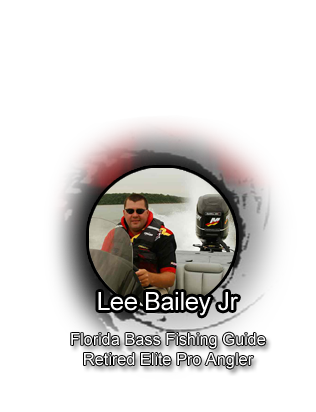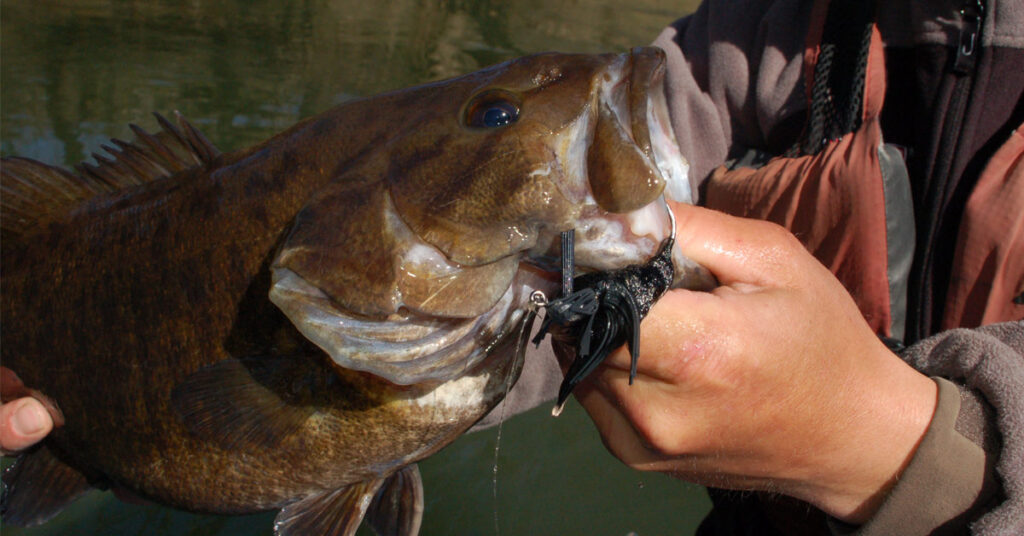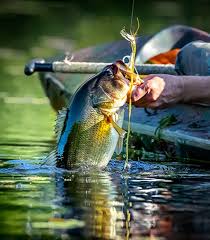
Spring bass fishing, let’s talk about it for the Northeast and then we will cover the south.
Bass fishing the Northeast!
Spring bass fishing is the time of year that every Bass fisherman who is worth his salt looks forward to. The thought of Bass that haven’t seen a lure for at least 3 months is enough to stir any of us into a frenzy.
Spring has it’s advantages but it can have its own unique problems as well. Rising water temperatures can send Bass into flurries of activity that are a Bass fisherman’s dream come true. But, just as quickly, a stubborn early spring cold front can be a nightmare that puts the fish back into hibernation mode.
Can you feel it in the air? The bass can. Springtime ushers in changing air temperature, longer days and stronger sun angles, all of which trigger a fish’s instincts to move out of deep winter holes to search for food and the all-important spawning beds. Even right here in the Northeast, many of the biggest bass will be caught between mid-March and May.
Typically, the areas that you will want to target will be in the 8- to 12-foot range. This will vary slightly on the overall depth of the lake, but generally speaking, this is a very realistic depth to find fish working toward their spawning grounds. In this instance try a small suspending crankbait. A bait that suspends in the strike zone and can remain very still is key this time of year and will entice even the most finicky fish.
Bass are most definitely creatures of habit. Their instincts—to hunt, take cover, and spawn— are primarily dictated by the temperature of the water in which they live. When the water is warm, between 55- and 65-degrees Fahrenheit, largemouth bass begin to spawn. Bass start to feed massively during pre-spawn, which generally occurs when the water is between 48 and 55 degrees.
Some anglers maintain that the moon cycle is almost as important as water temperature when you’re going after some giant bass pre-spawn. The new moon and full moon are times when bass are very active.
Fishing The South!
Some anglers live in warmer zones and may have been angling for bass for months already. Others have been patiently waiting for the lakes and rivers to thaw and the warm fronts start moving in.
Bass prefer to make nests in shallow water at the base of lilly pads near (relatively speaking) deeper water. Sand or hard clay may be used when bass do not have access to lilly pad bases. Male bass often build nests near structures such as submerged wood or weed beds. Bass stay near these quality spawning sites throughout the spring.
Larger bass are generally caught early in the fishing season. For smaller waters, anglers often catch the largest bass in late February and March. Fishing in the south anglers catch more large bass in March and April.
After the spawn the females can be found in deeper waters near the nest sites. They will suspend in deeper water as the males stay shallow to keep protecting their fry. The spawn is extremely stressful for bass and they need to feed like crazy to recover. That is why the pre-spawn, spawn, and post spawn are such an amazing time to go bass fishing.
Pay Attention and Catch More Fish
Pay attention to these details. You’ll increase your catch and unlock the secrets to early spring fishing.
“One thing to remember is that the real reason why we all enjoy fishing so much is the fun and camaraderie we experience with our friends and family. Some of the best fishing stories have nothing to do with how many fish we caught or what bait or technique we used. They are about the people we were with when we created those memories”.


















